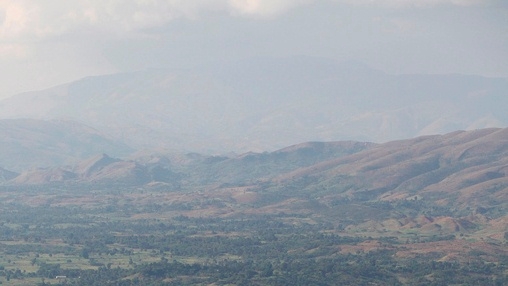Agriculture employs a fifth of workers in the Caribbean and generates a significant income for the region. Many countries are highly vulnerable to natural disasters and defenceless against price swings. Nonetheless the industry remains, in the main, uninsured against major shocks.
These are the findings of a new World Bank report, ‘Agricultural Risk Management in the Caribbean’, which details the experiences and lessons learnt in the region between 2009 and 2012.
In the past 20 years, Caribbean countries have, each year, spent between 1 and 9% of their GDP dealing with the effects of weather hazards. In addition, changing preferences within the European market have contracted the region’s traditional exports - sugar, bananas, cocoa and rice.
As a consequence the agriculture sector has been stagnating as farmers and governments have to absorb the costs of weather hazards and price fluctuations. This, in turn, has lead to lower rural income levels, increased poverty, and reduced economic growth and competitiveness.
With the exception of the banana industry in the Eastern Caribbean and a public insurance company in the Dominican Republic, agricultural insurance against natural disasters is non-existent in the region.
According to the FAO, in 8 Caribbean countries 90% of the farms have less than 10 hectares and grow multiple crops. These small farms represent over half of the available agricultural land. Therefore, making affordable insurance available to all those small-holders has proved highly problematic.
The World Bank, has been working to overcome some of these limitations:
- In 2007, the Bank launched the Caribbean Catastrophic Risk Insurance Facility (CCRIF) to help countries fund early reconstruction following natural disasters such as hurricanes and earthquakes. Covering the first few months after a disaster, claims are paid to participating governments based on the type of event rather than by assessing actual losses allowing for transparency and low-settlement costs.
- Following successes in Africa and Asia, the Bank has supported countries in beginning to implement market-based instruments, such as insurance and price-risk management, in the agricultural sector.
Situation in Haiti
Due to its location in the Caribbean basin, Haiti’s agricultural sector is exposed to hurricane and tropical storms. In addition, the deterioration of the environment has contributed to increased natural hazards as well as droughts and floods.
Haitian crops were severely affected during 2008 by four storms that caused direct damage estimated at around US$200 million. The 7.0 magnitude earthquake in January 2010 affected mostly urban areas, but also caused losses on the agricultural sector of around US$31 million.
In addition, the very low level of public and private investment in agricultural infrastructure make it virtually impossible to put in place strategies that would prevent or help to minimize the risks or consequences of a natural disaster.
For example, lack of watershed protection and deficiencies in irrigation are major causes of floods and droughts. Finally, the weak fiscal position of the Government restricts the funding for disaster response and preparedness.
The study makes a few recommendations in order to reduce the vulnerability of Haiti-s agricultural sector to natural disasters.
- It would be important to increase public funds dedicated to emergencies, with a roll-over mechanism; that is, for the years that the funds are not being used, the extra money would continue to accumulate.
- The document emphasizes that predetermined rules for disbursement would be important in order to reduce corruption.
- The data of the global agriculture census could register vulnerable farmers, helping the authorities to identify those most affected by natural disasters.
- It also recommends strengthen the quality and quantity of weather data to help prevent the effects of catastrophes, as well as invest more in infrastructure and improve the regulatory and legal framework for the development of market-based instruments for agricultural risk management.

